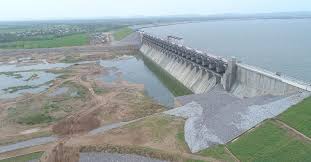In a region long shadowed by water scarcity, one government officer in Telangana has quietly accomplished what few thought possible: raising groundwater levels by six metres—a feat that stands as a rare triumph in India’s mounting water crisis.
At a time when depleting aquifers threaten agriculture, rural livelihoods, and public health, the initiative led by this district collector has drawn attention from policymakers, environmentalists, and citizens across the country. It is being hailed not merely as administrative success—but as a blueprint for water resilience.
Restoring What Was Lost, Replenishing What Remains
The plan wasn’t backed by flashy technology or massive budgets. Instead, it relied on a thoughtfully executed, community-centric water strategy.
Working closely with local panchayats, engineers, and conservation experts, the administration implemented:
- Check dams, recharge shafts, and percolation tanks
- Desilting of existing water bodies
- Micro-watershed mapping
- Regulated borewell drilling and water-use audits
More than 100 minor irrigation structures were revived or created under the initiative. Satellite imaging and on-ground hydrological surveys confirmed that groundwater in several blocks rose by as much as 6 metres over the course of two years.
The Groundwater Crisis India Cannot Ignore
India is home to 25% of the world’s groundwater extraction, and over 60% of its irrigated agriculture depends on it. Yet, over 70% of blocks in states like Haryana, Punjab, Tamil Nadu, and Maharashtra are classified as “critical” or “over-exploited”.
The crisis is structural, tied to policy failure, climate shifts, and unchecked urbanization. But the Telangana model proves that local leadership, community ownership, and scientific planning can push back against the tide.
Water as Governance: The Role of Leadership
At the heart of the turnaround is governance that listens and acts. Villagers were engaged through awareness drives, participatory rural appraisals, and real-time water-level monitoring. The district administration also coordinated with schools to introduce water education modules for students.
Farmers report that irrigation uncertainty has reduced, cropping cycles have stabilized, and migration due to drought has fallen sharply in some regions.
This local success story is now being studied by NITI Aayog and the Jal Shakti Ministry as a potential model for replication in other drought-prone districts.
A Ripple That Could Reshape Rural India
At a time when water headlines are often about loss—shrinking glaciers, drying rivers, and vanishing lakes—this quiet success offers a counter-narrative.
It suggests that even amidst a national crisis, decentralized, science-backed governance can reverse environmental decline. The rising aquifers of this Telangana district stand as a symbol of what is still possible, when leadership aligns with grassroots action.


